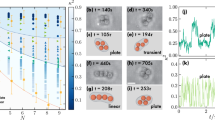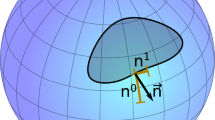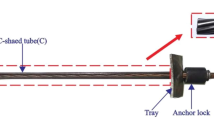Abstract
MR. S. E. ACKERMANN'S axiom1 that spherical lumps of coal of equal size have the same bulk density irrespective of the actual size is surely applicable to any symmetrical arrangement of such spheres, including the closest packing. The arrangement of spheres which he uses in his first calculation is symmetrical and satisfies the axiom, but is not a stable arrangement which would be attained by pouring the spheres into a box. His statement that the closest packing gives an increase in density as the size of sphere is decreased appears to be derived from an incorrect conception of what constitutes the closest packing. This is, of course, the arrangement in which each sphere touches twelve others (not eight), lines joining the centres forming a system of regular tetrahedra, and is the stable one which is taken up automatically.
This is a preview of subscription content, access via your institution
Access options
Subscribe to this journal
Receive 51 print issues and online access
$199.00 per year
only $3.90 per issue
Buy this article
- Purchase on SpringerLink
- Instant access to full article PDF
Prices may be subject to local taxes which are calculated during checkout
Similar content being viewed by others
References
Nature, 155, 82 (1945).
Author information
Authors and Affiliations
Rights and permissions
About this article
Cite this article
FOORD, S. Open Packing of Spheres. Nature 155, 427 (1945). https://doi.org/10.1038/155427a0
Issue Date:
DOI: https://doi.org/10.1038/155427a0
This article is cited by
-
Packing of Regular (Spherical) and Irregular Particles
Nature (1945)



